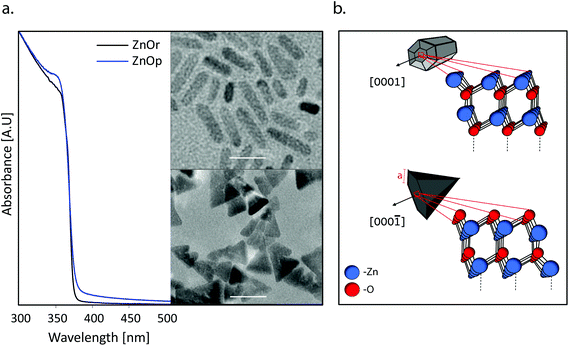Citation:
Alex Pinkas, Waiskopf, Nir , Gigi, Shira , Naor, Tom , Layani, Almog , and Banin, Uri . 6/1/2021. “Morphology Effect On Zinc Oxide Quantum Photoinitiators For Radical Polymerization”. Nanoscale, 13, Pp. 7152-7160. https://pubs.rsc.org/en/content/articlehtml/2021/nr/d1nr00896j. Copy at http://https://tinyurl.com/yhkvtz6j
Abstract:
 Semiconductor nanocrystal based photoinitiators, quantum PIs, are a viable alternative to organic photoinitiators demonstrating unique advantages, including a broad and tunable excitation window, limited migration, and more. Aiming towards efficient quantum PIs with tunable properties, a deeper understanding of the relationships between the nanoparticle properties and their efficiency is required. Herein, we studied the morphological effect on ZnO nanocrystals functioning as photoinitiators in both water-based and solvent-free formulations by comparing rod and pyramidal shaped particles of similar volumes and nearly identical surface area. Superior polymerization performances are measured for the nanorods. Photocatalytic characterization including oxygen consumption and reactive oxygen species formation as well as dyes reduction and oxidation, also showed enhanced activities for the nanorods. The different performances were attributed to the anisotropic nanorod morphology which is beneficial for charge separation as well as to the presence of a reactive [0001] facet in the nanorods, which is known to increase the adsorption of molecular oxygen and anionic molecules, thus affecting the catalytic activity. These observations, along with the higher photoinitiation efficiency of the ZnO nanorods, bring them closer to functionality as photoinitiators in numerous photopolymerization applications. Semiconductor nanocrystal based photoinitiators, quantum PIs, are a viable alternative to organic photoinitiators demonstrating unique advantages, including a broad and tunable excitation window, limited migration, and more. Aiming towards efficient quantum PIs with tunable properties, a deeper understanding of the relationships between the nanoparticle properties and their efficiency is required. Herein, we studied the morphological effect on ZnO nanocrystals functioning as photoinitiators in both water-based and solvent-free formulations by comparing rod and pyramidal shaped particles of similar volumes and nearly identical surface area. Superior polymerization performances are measured for the nanorods. Photocatalytic characterization including oxygen consumption and reactive oxygen species formation as well as dyes reduction and oxidation, also showed enhanced activities for the nanorods. The different performances were attributed to the anisotropic nanorod morphology which is beneficial for charge separation as well as to the presence of a reactive [0001] facet in the nanorods, which is known to increase the adsorption of molecular oxygen and anionic molecules, thus affecting the catalytic activity. These observations, along with the higher photoinitiation efficiency of the ZnO nanorods, bring them closer to functionality as photoinitiators in numerous photopolymerization applications. |





